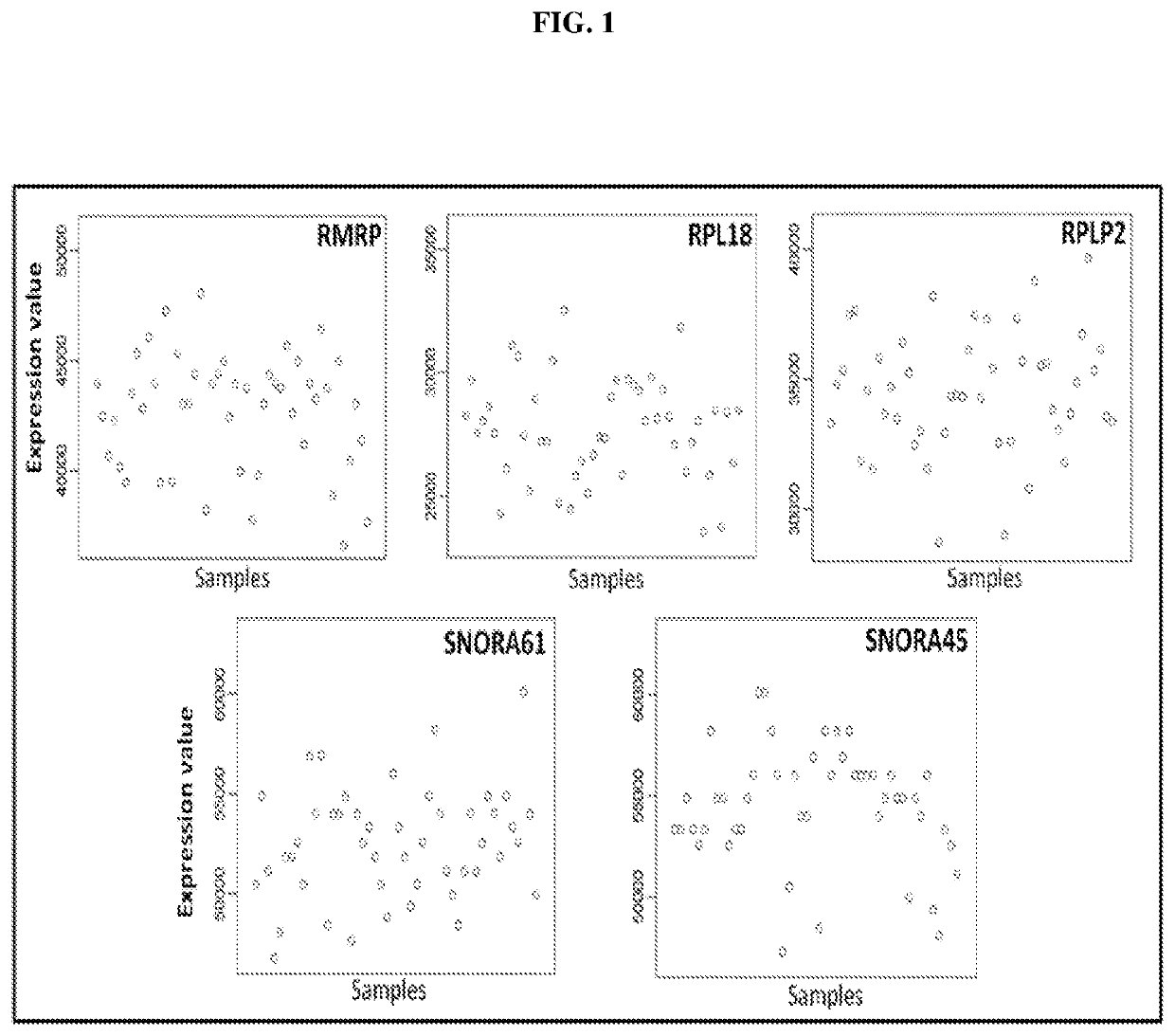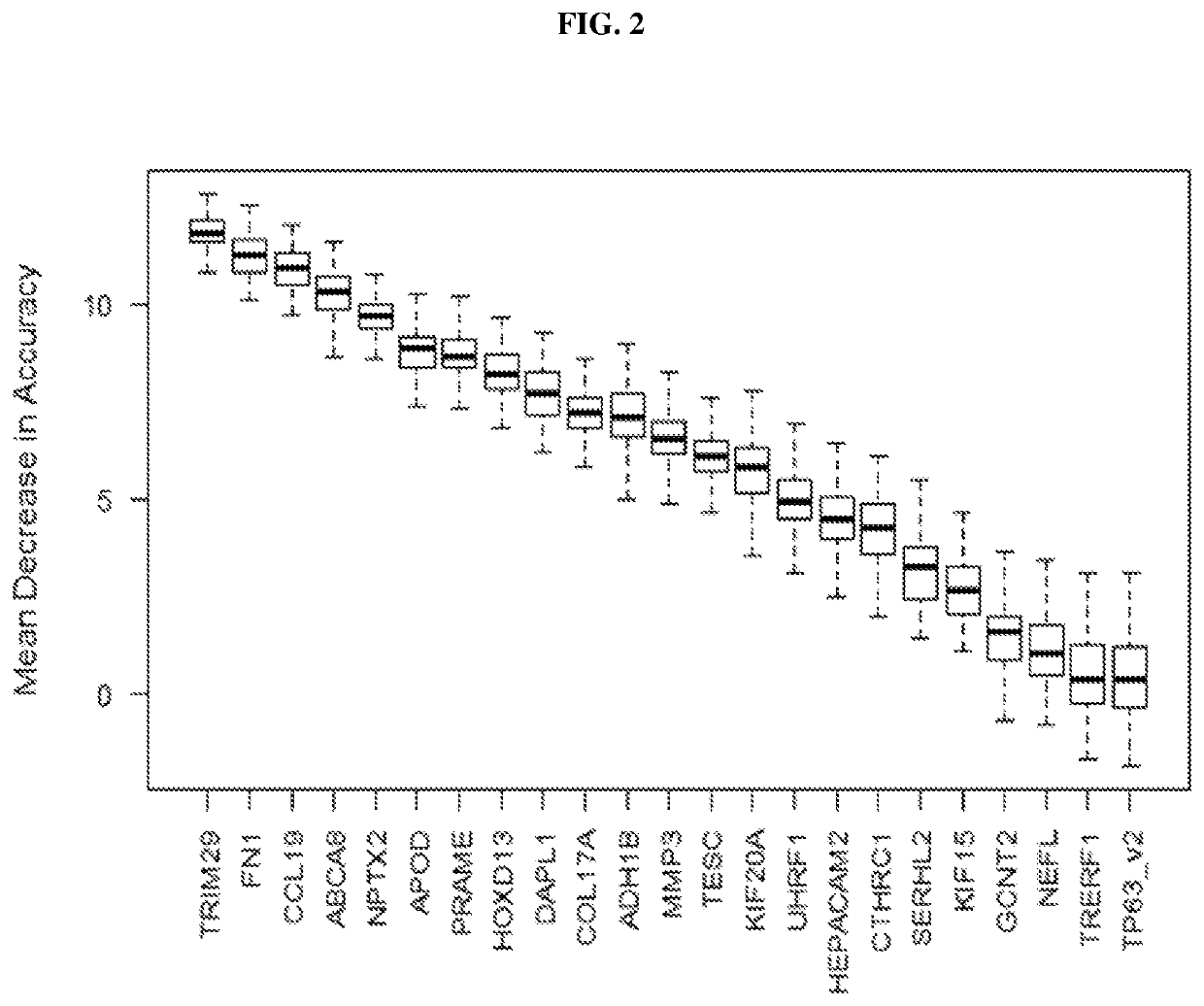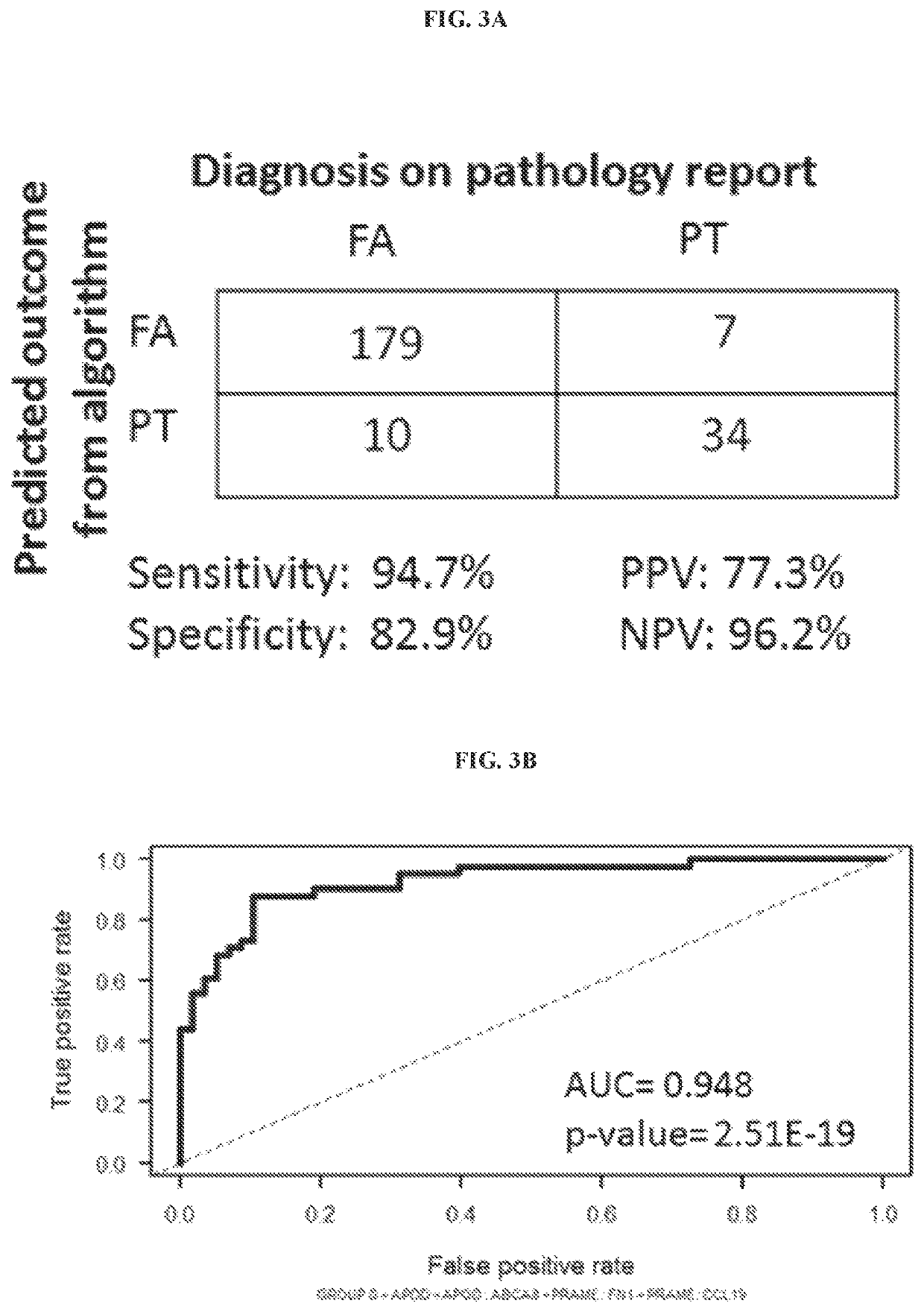Multigene assay
a multi-gene assay and tumour technology, applied in the field of breast tumour assays, can solve the problems of inability to definitively diagnose fibroadenomas from pts, unpredictable clinical outcomes, and limited biopsy or excision material for diagnosis,
- Summary
- Abstract
- Description
- Claims
- Application Information
AI Technical Summary
Problems solved by technology
Method used
Image
Examples
example 1
[0065]Study Population
[0066]The study received approval from the Institutional Review Board. Forty eight formalin-fixed, paraffin embedded (FFPE) samples of fibroadenomas (FA) and phyllodes tumours (PT) were selected from the database of Department of Pathology, Singapore General Hospital (Table 1). Haematoxylin and eosin (H&E) stained slides were retrieved and reviewed. Diagnoses for the core biopsy samples were confirmed on corresponding excisions.
[0067]
TABLE 1Clinical features of the training cohort from 38 patients.Fibro-Phyllodesadenomastumoursp-Features(n = 19)(n = 19)valueAgeMedian (range)35(17-80)44(18-64)0.09SizeMedian (range)25(15-50)65(25-220)Ethnicity, n (%)0.2Chinese13(68.4)11(57.9)Malay0(0.0)4(21.0)Indian2(10.5)1(5.3)Others4(21.1)3(15.8)HistologySimple fibroadenoma15aComplex fibroadenoma 4cBenign phyllodes tumour13b Borderline phyllodes tumour3cMalignant phyllodes tumour3ca5 paired core biopsies and surgical excisions;b4 paired core biopsies and surgical excisions;c1 p...
example 2
[0068]Gene Expression Profiling
[0069]Sample Preparation and RNA Extraction
[0070]Representative tumour area was identified and marked. 3-7 sections of 10 μm sections from the same FFPE tumour block were obtained. Sections were deparaffinised in two changes of xylene for 2 minutes each then in three changes of absolute ethanol for 1 minute each. Macrodissection was performed immediately to retrieve the tumour area. RNA was extracted from the macrodissected tissue using the RNeasy FFPE kit (Qiagen, Germany) according to manufacturer's protocol with slight modifications. Briefly, buffer PKD and proteinase K was added after all ethanol was removed from the tissue. The tissue mixture was incubated overnight at 56° C. instead of 15 minutes as stated in the protocol, then it was incubated at 80° C. for 15 minutes followed by incubation on ice for 3 minutes. DNase I and DNase Booster Buffer was added and incubated in room temperature for 15 minutes after which buffer RBC was added to adjust ...
example 3
[0080]Validation of Selected Genes by Quantitative Polymerase Chain Reaction (qPCR) Assay
[0081]Primers Design
[0082]Primers were designed using Primer-BLAST (NCBI) with accession number listed in Table 3. Criteria for qPCR primers designed were as follows: 1) amplicon size of 50 to 80 basepair (bp); 2) at least one primer spanning across an exon-exon boundary; 3) At least 7 bases must anneal to the 5′ and 3′ side of the junction. List of primers designed is as shown in Table 3.
[0083]
TABLE 3Primers designed for potential differentiating genes and normalization genes.AccessionAccessionNumbernumberprovidedused forAmpl-Geneby WG-primerForward PrimerReverse PrimericonNameDASLdesignSequenceSequencesizeABCA8NM_NM_CCT GGC GGA CAGGAA GAG CCC57007168.2007168.2GAA AGT ATTGCG CAC TTT(SEQ ID NO: 3)AG(SEQ ID NO: 4)ADH1BNM_NM_TCG CAT TAA GATCCA CGT GGT50000668.3000668.5GGT GGC TGTCAT CTG TGT(SEQ ID NO: 5)GA(SEQ ID NO: 6)ADH1CNM_NM_GTT CGC ATT AAGGTT GCC ACT63000669.3000669.3ATG GTG GCT GAAC CAC ATG...
PUM
| Property | Measurement | Unit |
|---|---|---|
| total volume | aaaaa | aaaaa |
| total volume | aaaaa | aaaaa |
| size | aaaaa | aaaaa |
Abstract
Description
Claims
Application Information
 Login to View More
Login to View More - R&D
- Intellectual Property
- Life Sciences
- Materials
- Tech Scout
- Unparalleled Data Quality
- Higher Quality Content
- 60% Fewer Hallucinations
Browse by: Latest US Patents, China's latest patents, Technical Efficacy Thesaurus, Application Domain, Technology Topic, Popular Technical Reports.
© 2025 PatSnap. All rights reserved.Legal|Privacy policy|Modern Slavery Act Transparency Statement|Sitemap|About US| Contact US: help@patsnap.com



